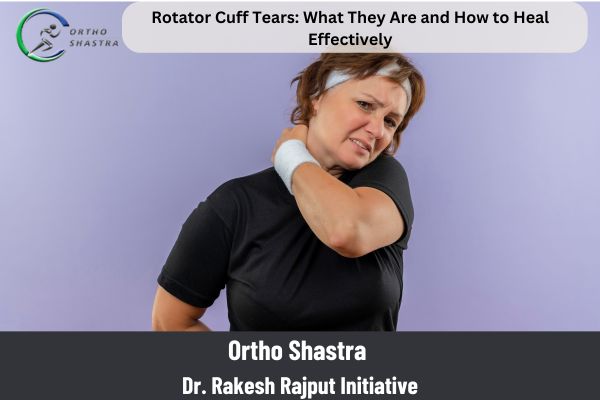Rotator Cuff Tears: What They Are and How to Heal Effectively with Dr. Rakesh Rajput
A rotator cuff tear can significantly impact your shoulder’s function, leading to pain, weakness, and a reduced range of motion. Whether caused by a sudden injury or wear and tear over time, understanding the condition and knowing how to treat it is crucial for effective recovery. Dr. Rakesh Rajput, a leading orthopedic surgeon, provides insights into what rotator cuff tears are, how they occur, and the best ways to heal effectively.
What Is a Rotator Cuff Tear?
The rotator cuff consists of four muscles and their tendons that surround the shoulder joint, helping to lift and rotate the arm. A rotator cuff tear happens when one or more of these tendons is torn or damaged. The tear can be partial, where only part of the tendon is affected, or full-thickness, where the tendon is completely torn.
Common Causes of Rotator Cuff Tears
- Age-Related Degeneration: As we age, tendons naturally weaken and lose elasticity, making them more prone to tears.
- Overuse: Repetitive overhead movements, such as those in sports or certain occupations, can lead to overuse injuries.
- Trauma or Injury: A sudden fall or lifting something heavy may cause an acute tear.
- Imbalance or Poor Posture: Weak or imbalanced muscles can strain the rotator cuff over time, leading to damage.
Signs and Symptoms of a Rotator Cuff Tear
- Pain in the Shoulder: Often a dull ache that worsens when lifting or reaching overhead.
- Weakness: Difficulty raising your arm or rotating the shoulder.
- Popping or Clicking Sensation: A feeling of instability or discomfort when moving the shoulder.
- Restricted Movement: Difficulty performing activities like brushing your hair, reaching for objects, or lifting.
Treatment for Rotator Cuff Tears: Options for Healing
Dr. Rakesh Rajput emphasizes that treatment for a rotator cuff tear depends on the severity of the injury. Here’s a look at the treatment options:
Non-Surgical Treatments:
- Rest and Ice: Resting the shoulder and applying ice can reduce inflammation and alleviate pain.
- Physical Therapy: A tailored rehabilitation program can help strengthen the muscles around the shoulder, improve range of motion, and support healing.
- Medications: Nonsteroidal anti-inflammatory drugs (NSAIDs) like ibuprofen can help reduce pain and inflammation.
- Corticosteroid Injections: For more severe pain, corticosteroid injections may be recommended to provide temporary relief.
- Lifestyle Modifications: Avoiding overhead movements and modifying activities that strain the shoulder can promote healing.
Surgical Treatment:
When conservative treatments fail, surgery may be necessary, especially for larger or more complex tears. Dr. Rajput explains the two primary surgical options:
- Arthroscopic Surgery: A minimally invasive procedure in which small incisions are made, and a camera is inserted to guide the surgeon in repairing the torn tendon. This approach leads to a quicker recovery time and less tissue damage.
- Open Surgery: In cases where the tear is more significant, open surgery may be required to directly repair the tendon. This approach may involve a longer recovery time.
Post-Surgical Recovery:
Recovery after rotator cuff surgery is a gradual process. Dr. Rajput emphasizes the importance of physical therapy during rehabilitation to regain strength and mobility. Typically, you will need to wear a sling for several weeks, followed by an exercise program that may last several months, depending on the severity of the injury and the type of surgery performed.
Preventing Rotator Cuff Tears
Dr. Rajput advises that while some rotator cuff tears are unavoidable, taking proactive steps can reduce your risk of injury:
- Strengthening the Shoulder Muscles: Regularly performing exercises to strengthen the rotator cuff muscles and the surrounding shoulder muscles can provide stability and prevent injury.
- Maintaining Good Posture: Proper alignment helps distribute weight evenly across the shoulder joint, reducing unnecessary strain.
- Avoiding Overhead Movements: If your job or sports activities involve repetitive overhead motions, take frequent breaks and vary your movements to minimize strain on the shoulder.
Conclusion
A rotator cuff tear can be a debilitating injury, but with the right diagnosis and treatment plan, recovery is possible. Whether you opt for non-surgical therapies or surgery, consulting with an experienced orthopedic surgeon like Dr. Rakesh Rajput is essential for creating a personalized treatment plan that suits your needs. Take the first step toward recovery today and get back to enjoying full shoulder function without pain.

